•A
process manager aims improving financial performance by satisfying customer in
the product attributes.
DIMENSIONS
OF A PROCESS THAT PRODUCE DESIRED PRODUCT ATTRIBUTES
1.Process cost- Total cost incurred
in producing and delivering outputs. Raw material plus fixed and variable
operating cost.
2. Process flow time-Total time needed
to transform a flow unit from input into output. Includes actual process time
and any waiting time spent in buffers.
3. Process flexibility-
The ability of the
process to produce and deliver desired product variety and its ability to deal
with fluctuating demand. Process flexibility depends on flexibility of
resources e.g flexible technology
and cross trained workers or generalists vs dedicated and specialized resources.
4.Process quality- refers to the ability
of the process to produce and deliver quality products. It includes process
accuracy in producing products that conform to design specifications,
reliability and maintainability of the process.
PROCESS COMPETENCE
The Four
determinants of a process success
1.PROCESS DESIGN- This involves decisions like; location and capacity,
product design, resource choice and investment( capital, technology and
labor), and scale of operation. These
should be decided in a way that meet customer expectation of the product
●
2.METRIC IDENTIFICATION- This involves identification of measurable dimensions
along which the performance of the process will be tracked. Mostly derived from
customer expectation and companies strategic goals. E.g. focus on responsive needs carefully tracking
of order fulfillment time, focus on
innovation needs track on revenue from previous innovations for a range of
time.
●
3.PROCESS PLANNING- Involves identifying
targets for various metrics and specifying managerial policies that support the
achievement of these targets. Managerial
policies specify the operation of the process and use of resources over time to
best meet customer demand. E.g. Number of
units to be carried in stock and when replenishment order should be
placed to ensure a desired level of product availability.
PROCESS
COMPETENCE cont…
4.Process control- Is the tactical aspect of the process
management that is focused on continually ensuring that in the short run the
actual process performance conforms to the planned performance. Control
decisions include monitoring and correcting product cost, delivery time,
inventory levels and quality defects.
5. Process improvement- Managers identify metrics that
need to be improved in the long run and work on changes in process design or
planning that are required to achieve this improvement. E.g Toyota identified need to operate with lower
inventory, so they need flexible suppliers to give JIT DELIVERY.
SECTION
2: BUILDING COMPETITIVENESS
2.1 STRATEGIC
POSITIONING AND OPERATIONAL EFFECTIVENESS
•
•Strategy:
Originally a Greek military term; the
art or science of planning a war. Original management thinking treated business
as a war and the goal was to win.
•Today
thinks have changed, CEO’S are no longer generals and workers are no longer
solders. The modern definition of strategy is a plan to achieve an objective.
•A
plan specifies precisely what managers must do to reach corporate objectives.
•Major
objective of a business strategy is to deliver sustained superior, not just
average performance relative to
competitors.
•Sustainable
competitive advantage needs a firm to be and remain different from and better
than rivals.
STRATEGIC POSITIONING
AND OPERATIONAL EFFECTIVENESS cont…
Competitive product space
•Will
you differentiate yourself on –
Product Cost?
Quality?
Response Time?
Variety?
•All
of the above? Some? Tradeoffs? A firm may differentiate itself using any
combination of the above four product
attributes.
•Competitive product space is the representation of
the firm’s product measured along the
four dimensions or product attributes.
STRATEGIC POSITIONING
AND OPERATIONAL EFFECTIVENESS cont…
•Strategic positioning: Defines those
positions that the firm wants to occupy in its competitive product space. It
identifies the product attributes that
the firm wants to provide to its customers.
•
•Occupying
a differentiated position, means producing and delivering different product
attributes to those of competitors.
•How
to differentiate your strategic position? requires a firm’s business processes
to be structured and operated in ways that differ from competitors.
STRATEGIC POSITIONING
AND OPERATIONAL EFFECTIVENESS cont…
•Operational effectiveness means possessing process
competencies that support the given strategic position.
• It refers to any
number of practices that allow a company to better utilize its inputs by for
example reducing defects in products or developing products faster.
Gaining and sustaining a competitive advantage requires
that a firm have good strategic position and operational effectiveness to
support that position.
THE
STRATEGY HIEARARCHY
•LEVEL
1: Corporate
strategy ( highest level):
•LEVEL
2: business
strategy
•LEVEL 3 :Functional strategies
-
Marketing
-
Operations
-
Finance
STRATEGIC
FIT
•Strategic fit is the consistency between the firm’s strategic position
and the competencies of its process and managerial policies.
•In
our customer focused era of today,
strategic fit is achieved using
either of two approaches:
1.Market -driven strategy- A firm starts with
key competitive priorities and then develops processes to support them. Best
for commodity producers. e.g Apple.
2.Process-driven strategy- A firm starts with a
given set of process competencies and then identifies a market position that is
best supported by those processes. Best for technologically innovative
companies. E.g Google.
Strategic
fit requires both market and process driven strategies. Identify external
market opportunities then develop internal process competencies until the two
are mutually consistent. The fitting is adjusted over time comparing with
competitors till the firm finds its best position.
FOCUSED
OPERATIONS
•No
single process can perform well on every dimension, there can not be a process
that fits all strategies. Choosing a strategy involves Focus:
•Focused strategy- committing
to a limited, congruent set of objectives in terms of demand ( products and
markets) and supply ( inputs, necessary process technologies and volumes). This approach concentrates on serving limited
market segments.
•Focused Process- a process that Supports a focused
strategy by concentrating on a small region of product space. All products from a focused process have
similar attributes in terms of cost, quality, response time and variety.
Even if a strategy calls for serving a broad market
segment each of which requires different
strategic emphasis, it can be separated into sub strategies. E.g. IN GENERAL
HOSPITALS EMERGENCY ROOM AND TRAUMA UNITS ARE
SEPARATED FROM THE REST OF THE
FACILITY.
OPERATIONS
FRONTIER AND TRADE OFFS
•Operations frontier is the smallest curve that contains all current industry
positions.
•
•Trade off is a decreasing of one aspect to increase another.
Moving from one point to another along
the frontier represents a tradeoff.
•The
closer the firm is to the frontier the higher is its operational effectiveness.
•Operating
along the frontier mean superior performance. The superiority is measured in
comparison with the world class firms e.g Toyota, Apple etc.


















Social Plugin